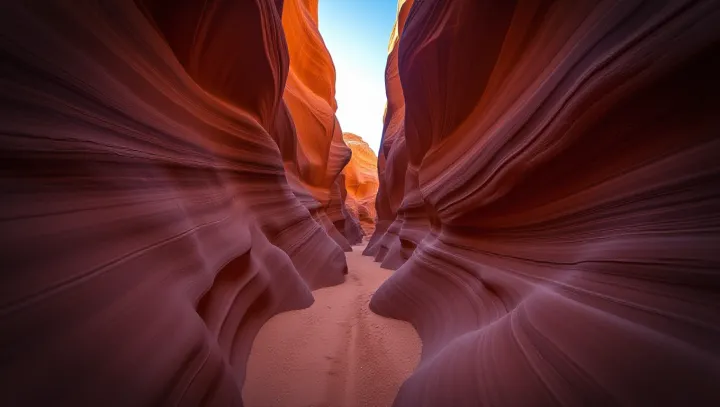Antelope Canyon: Nature's Mystical Masterpiece

Antelope Canyon, located in Page, Arizona, is often cited as the world's most illustrious slot canyon, inviting countless tourists and photography enthusiasts each year. This natural wonder, characterized by its narrow sandstone passageways, produces an almost otherworldly experience as sunlight dances across its intricately carved surfaces. The canyon is comprised of two separate parts referred to as Upper Antelope Canyon, or 'The Crack,' and Lower Antelope Canyon, known as 'The Corkscrew.' Each section presents unique vistas and challenges, with Upper Antelope Canyon being especially famous for its shimmering light beams, which occur as sunlight penetrates through openings above, creating a surreal light show.
Experts point to Antelope Canyon's cultural importance to the Navajo Nation, underscoring the canyon's status as a sacred site. This aspect adds an additional layer of significance to visits, urging respect and conservation. Anthropologists assert that the beauty carved into these canyons traces back over centuries, shaped by relentless wind and water erosion.
With tourism trends emphasizing experiential travel, Antelope Canyon's striking features and photogenic allure make it a hotspot, not only for visual delight but as an educational journey into geological and cultural histories. Visitors are urged to respect guided tours to help maintain the site's pristine condition. In conclusion, while Antelope Canyon remains a photographer's paradise, it is the interweaving of natural beauty and indigenous culture that places it at the forefront of global natural wonders.
Ongoing conversations about its preservation emphasize the importance of maintaining this stunningly unique landscape for future generations.
